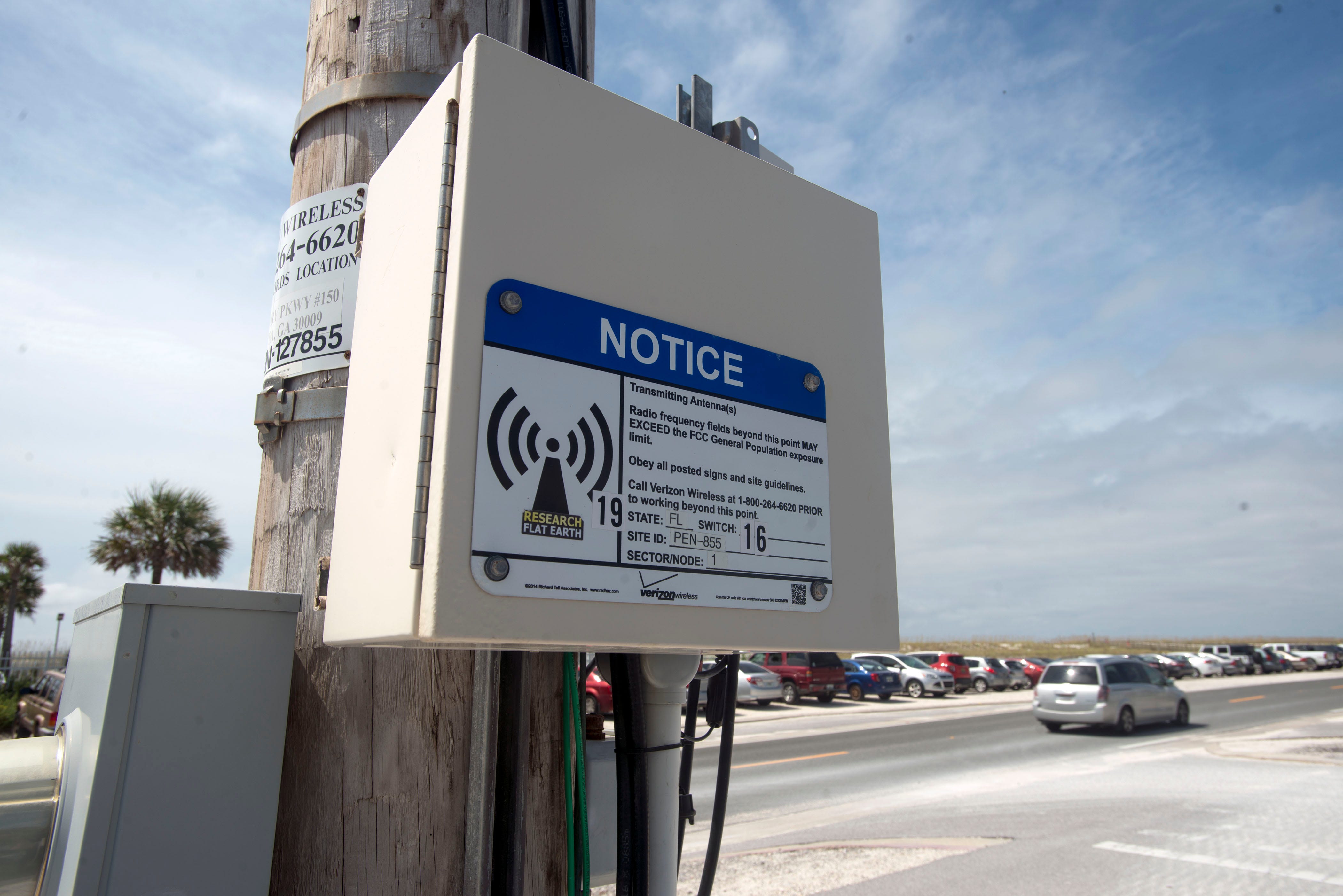If you've ever been through a city and spotted tiny mini 5G cell towers on street light poles. They look like little boxes, but they're actually broadcasting wireless signals from cell phone providers to your phone.
They are replacing the larger specially-designed cell towers. While they're less noticeable, they still can create problems for those who live nearby.
A FCC's Radiation Exposure Thresholds
The FCC's Radiation Exposure Thresholds determine the maximum amount of time an individual can be exposed to electromagnetic energy from wireless devices. The limits for exposure are based on research which show that the energy of RF could be harmful to human health.
The rate of absorption called the specific absorption rate (SAR) is a measure of the radiofrequency energy that is absorbed by tissue. It's usually 1.6 Watts per kilogram spread over a Gram of tissue.

But, since 5g operates at higher frequencies, it has the potential to increase the intensity of energy on the skin and other exposed body areas. This can lead to various possible harms, such as an increase in appearance of skin disorders like dermatitis, skin cancer and cataracts.
Due to the potential for severe effects of 5g radiation, PSU has chosen to set a general localized power density limit of 4 mW/cm2 based on the average over 1 cm2, but not exceeding 30 minutes for the entire 5G spectrum at 3000 GHz. This localized limit is consistent with the highest SAR that is spatially averaged at 1.6 W/kg, averaged over one grams of tissues at six GHz.
The FCC's Maximum Exposure Thresholds for Maximum Exposure
If you've ever used a mobile phone, you're probably aware that a safe location from the tower should be at least 400 meters away. This is because the power of the transmission of cell towers increases drastically the further away the tower is.
Although this may sound like something that's good however, those living close to towers could be more susceptible to health problems. For instance, a study conducted in 2014 in India discovered that people who lived within 50 meters from cell towers suffered much more health problems than those living further far from antennas.
But, the study found that people who moved into areas farther away from the cell towers saw their symptoms return to normal within a few days. Other studies have shown that exposure to high amounts of electromagnetic field radiofrequency (EMFs) can lead to brain tumors, cancer and other health issues.
This is because radiofrequency radiation, used in wireless communication, can penetrate the human body's exterior layer, the skin. This is vital to be aware of because the skin serves as a barrier to protect against injury to the body, infection from pathogenic microorganisms, as well as infiltration of toxic substances. The skin is the largest organ of the human body. It is responsible for keeping the integrity of other organs.
The FCC's Minimum Exposure Thresholds
The FCC's Minimum Exposition Thresholds are based upon numerous assumptions that are not supported by evidence from science. They include the incorrect belief that exposures to RF radiations are not harmful because of the minimal absorption into body (i.e. thermal heating of tissue).
what is a safe distance from a 5g cell tower overlooks the more extensive penetration of ELF parts of the modulated RF signal, as well as the consequences of brief bursts of heat generated by RF waves that are pulsed. These theories are not compatible with current understanding of the biological consequences of RF radiation. As such, they should not be relied upon for health-protection exposure standards.
Additionally to safe distance from cell tower , ICNIRP and FCC limit their maximum exposure limits to local peak SARs based on the maximum spatial specific absorption rate (psSAR) which is an inadequate dosimetric tool to determine the degree of exposure to RF radiation. Particularly it is inconclusive for frequencies that exceed 6 GHz. Additionally, psSAR hasn't been evaluated for RF radiation exposed to other environmental agents , such as sunlight. Interactions of RF radiation and other environmental agents could cause synergistic or antagonistic impacts. This would result in an increased risk of negative health effects. For example, exposure to RF radiation along with exposure to sunlight can raise the chance of developing skin cancer, and may also exacerbate other skin diseases such as acne.
